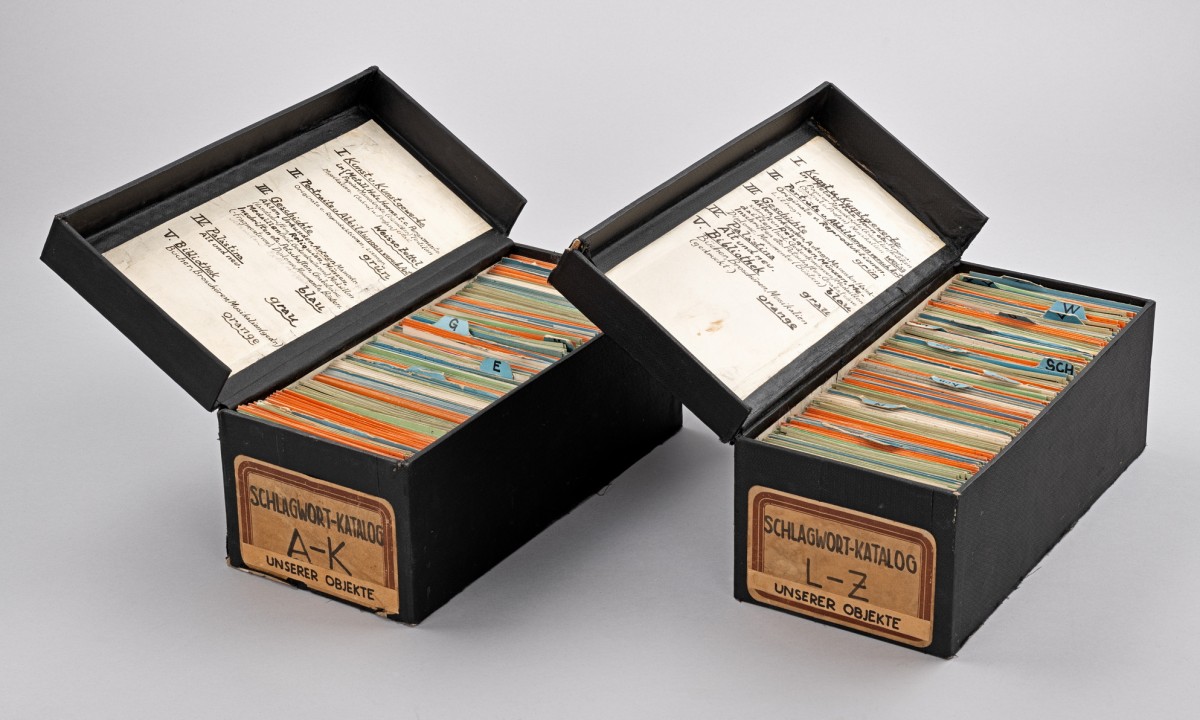Card catalogue of the first Jewish Museum Vienna, before 1938, Inv. No. 2129
24. November 2025
Expo Window
Our Objects! From A to Z.
by Caitlin Gura
130 years ago in November 1895, the Jewish Museum Vienna opened its doors. This anniversary year prompts a thorough look through contemporary newspapers to gain insight into the dynamic history of the world’s first Jewish museum.
The founding committee of the Jewish Museum Vienna was established under the name “Society for the Collection and Preservation of Art and Historical Monuments of Judaism.” It consisted of prominent Jewish Viennese figures from the fields of art, science, and politics:
Through the initiative of men who, though different in profession and status, have united in their love for art and science and in their reverence for the past of the Jewish people, a society has been founded in Vienna with the aim of creating a museum for art and historical monuments of Judaism. It will collect and preserve works of literature, art, and science, as well as historical monuments related to the political and cultural history of the Jews, regardless of whether they originate from Jews or other peoples. While in other major cities such as London, Paris, and Berlin, public museums house many treasures of Jewish antiquities, in Vienna - apart from the precious collection of Hebrew manuscripts in the Imperial Court Library and the recently established and renowned “Papyrus Archduke Rainer” collection - we have virtually nothing. The newly founded society has set itself the task of remedying this deficiency.1
The founding committee of the Jewish Museum Vienna was established under the name “Society for the Collection and Preservation of Art and Historical Monuments of Judaism.” It consisted of prominent Jewish Viennese figures from the fields of art, science, and politics:
- President: Architect Wilhelm Stiassny (1842–1910)
- First Vice President: Burgtheater actor Adolf Ritter von Sonnenthal (1834–1909)
- Second Vice President: University professor and founder of otology Dr. Adam Politzer (1835–1920)
- Treasurer: City councilman and civil engineer Theodor Ritter von Goldschmidt (1837–1909)
- Secretary: Architect Max Fleischer (1841–1905)
- Financial Auditor: Civil engineer Sigmund Taussig (1840–1910)
- Other members included composer Ignaz Brüll (1846–1907), farmer Abraham Epstein (1841–1918), lawyer and politican Dr. Karl Grünhut (1844–1929), Chief Rabbi Dr. Moritz Güdemann (1835–1918), researcher of Southern Arabia Dr. David Heinrich von Müller (1846–1912), and lawyer Dr. Adolf Stein (1838–1937).
Through the initiative of men who, though different in profession and status, have united in their love for art and science and in their reverence for the past of the Jewish people, a society has been founded in Vienna with the aim of creating a museum for art and historical monuments of Judaism. It will collect and preserve works of literature, art, and science, as well as historical monuments related to the political and cultural history of the Jews, regardless of whether they originate from Jews or other peoples. While in other major cities such as London, Paris, and Berlin, public museums house many treasures of Jewish antiquities, in Vienna - apart from the precious collection of Hebrew manuscripts in the Imperial Court Library and the recently established and renowned “Papyrus Archduke Rainer” collection - we have virtually nothing. The newly founded society has set itself the task of remedying this deficiency.1
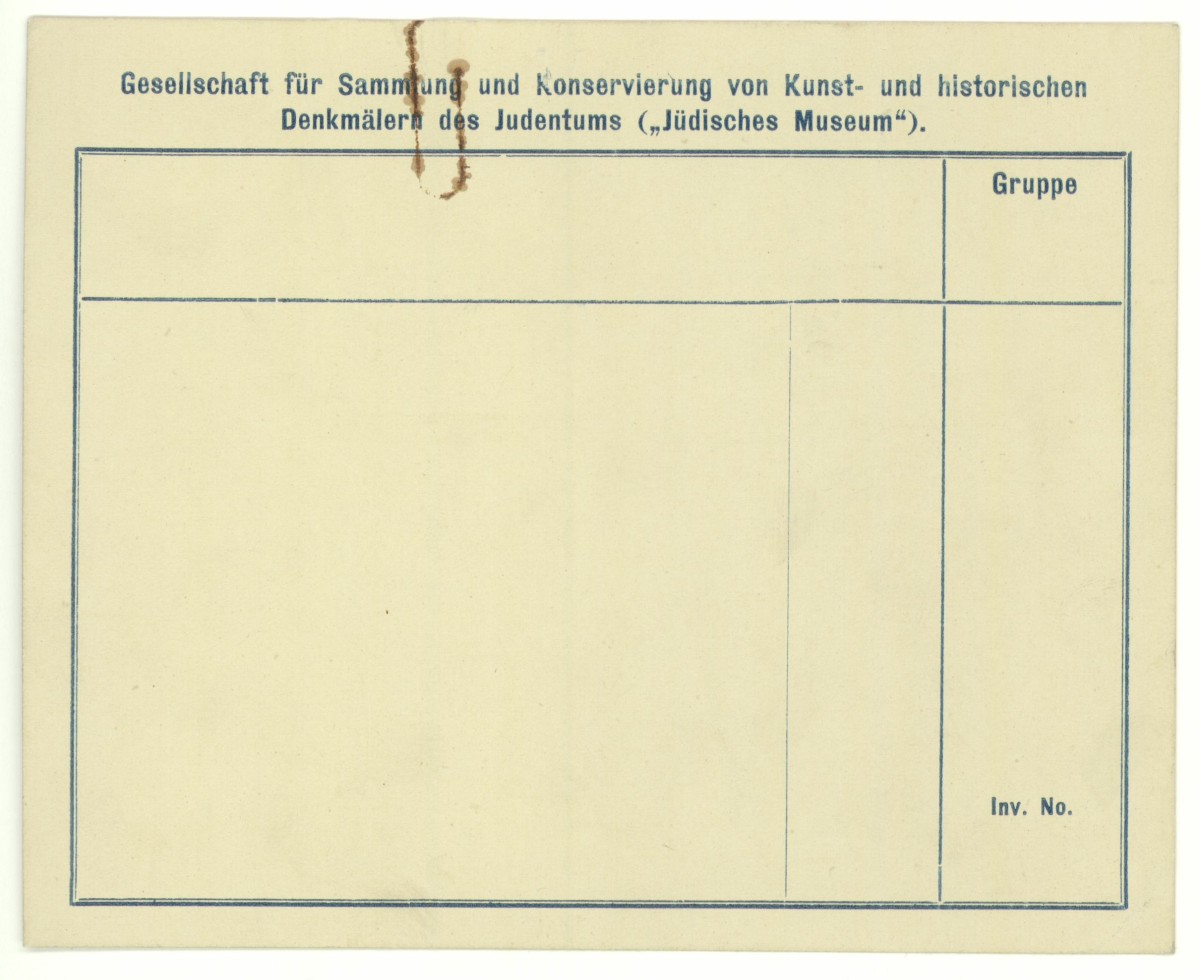
© JMW
A blank catalogue card of the first Jewish Museum Vienna. Inv. No. 12514, c. 1900
By the time of its opening in November 1895, the museum had collected around 400 objects. The first location was at Rathausstraße 13 in the first district, a building constructed by the society’s president, Wilhelm Stiassny.
In 1898, the U.S. ambassador to the Ottoman Empire, Mr. Oscar Straus, visited the museum with his family. Upon arrival, the ambassador expressed his delight at visiting the museum, noting that it had already been widely discussed in the United States. The Neuzeit reported:
With great interest, the guests viewed numerous objects of outstanding archaeological and artistic value, particularly Italian majolica, ritual objects, old manuscripts, and Jewish protection letters (Hoffreiheiten) from the 18th century, of which, of course, no one in America is aware.[...] After nearly two hours, the ambassador and his family left the Jewish Museum.2
In 1898, the U.S. ambassador to the Ottoman Empire, Mr. Oscar Straus, visited the museum with his family. Upon arrival, the ambassador expressed his delight at visiting the museum, noting that it had already been widely discussed in the United States. The Neuzeit reported:
With great interest, the guests viewed numerous objects of outstanding archaeological and artistic value, particularly Italian majolica, ritual objects, old manuscripts, and Jewish protection letters (Hoffreiheiten) from the 18th century, of which, of course, no one in America is aware.[...] After nearly two hours, the ambassador and his family left the Jewish Museum.2

© ANNO/Austrian National Library
“Viennese Landmarks,” excerpt from the Neue Freie Presse. May 22, 1910, page 47
Due to lack of space for the growing collection and insufficient funding, the museum relocated several times between 1901 and 1912: from Krugerstraße 8 in the first district to Baron Wenkheim’s estate at Praterstraße 23 in the second district, and finally to the upper floor of the Talmud Torah School at Malzgasse 16.3 The museum was open to the public on Saturdays and Sundays between 11:00 and 13:00.

© JMW
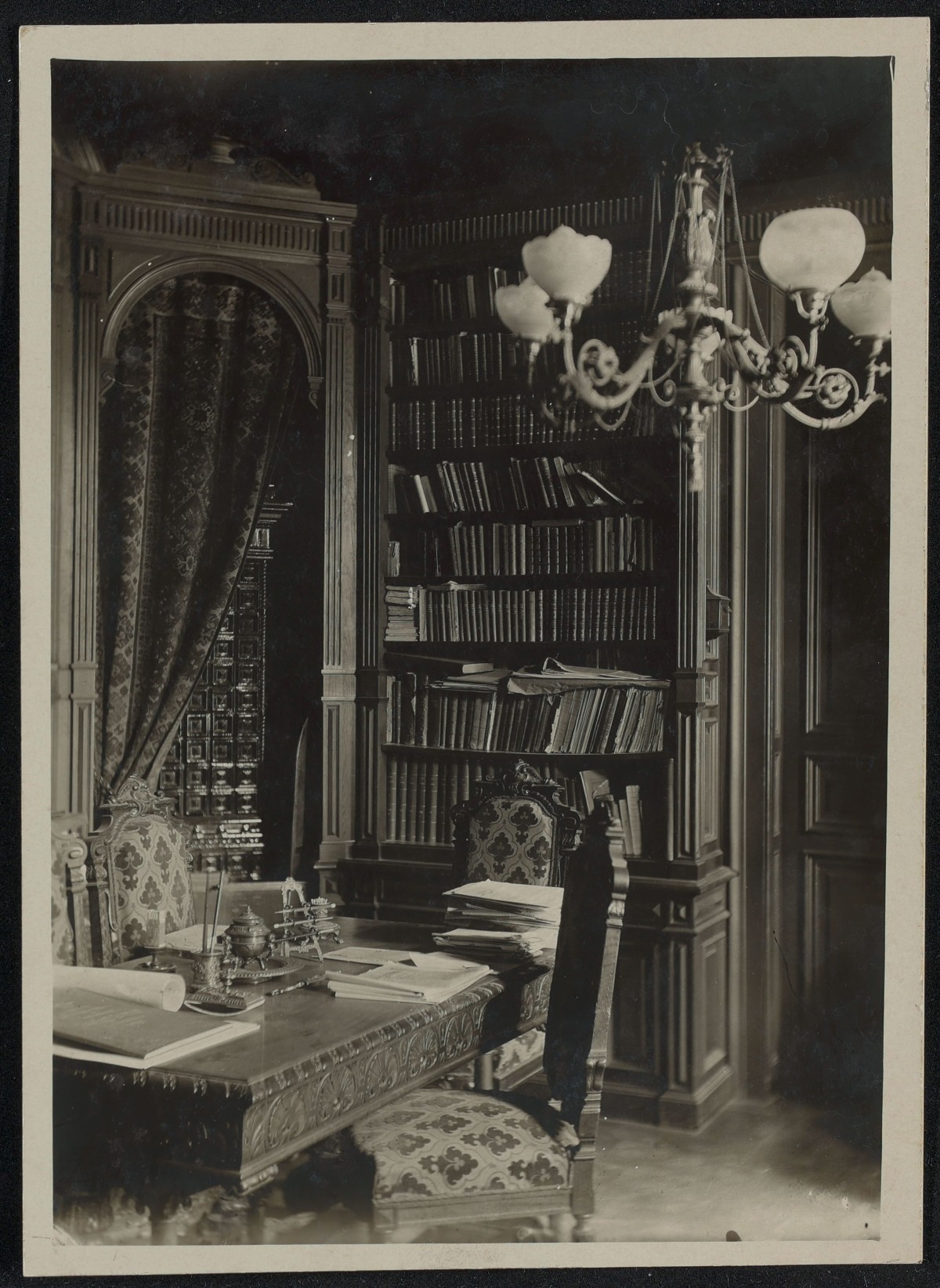
© JMW
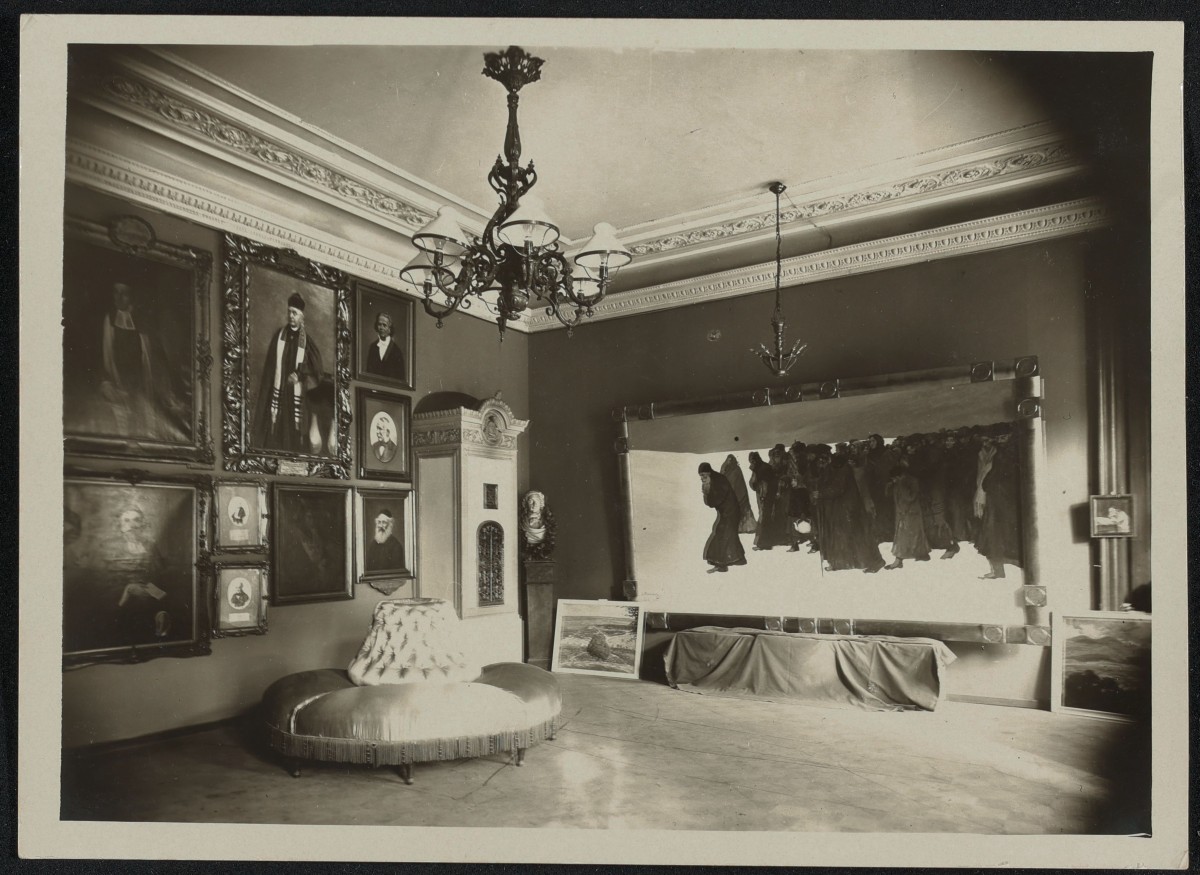
© JMW
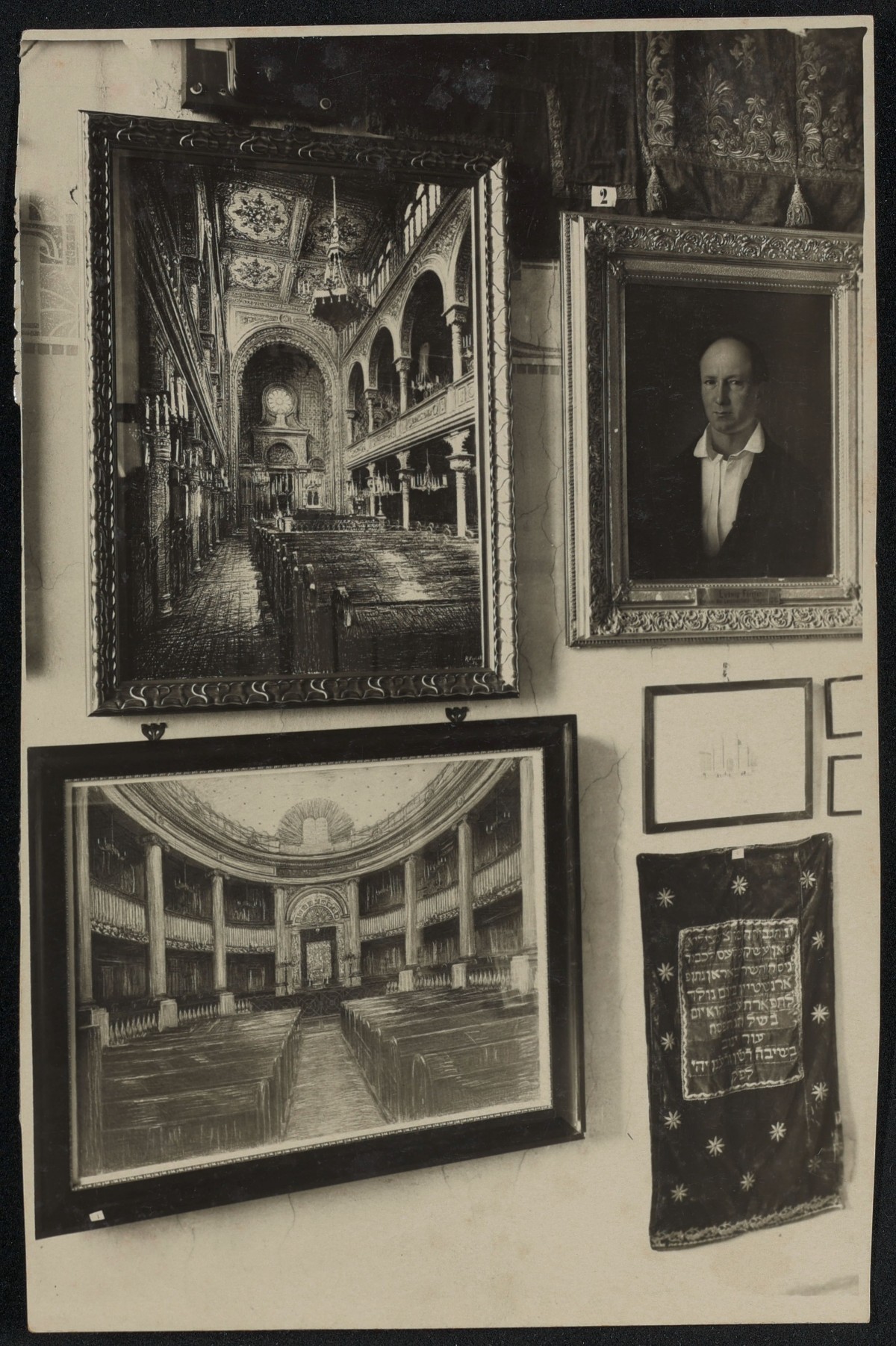
© JMW
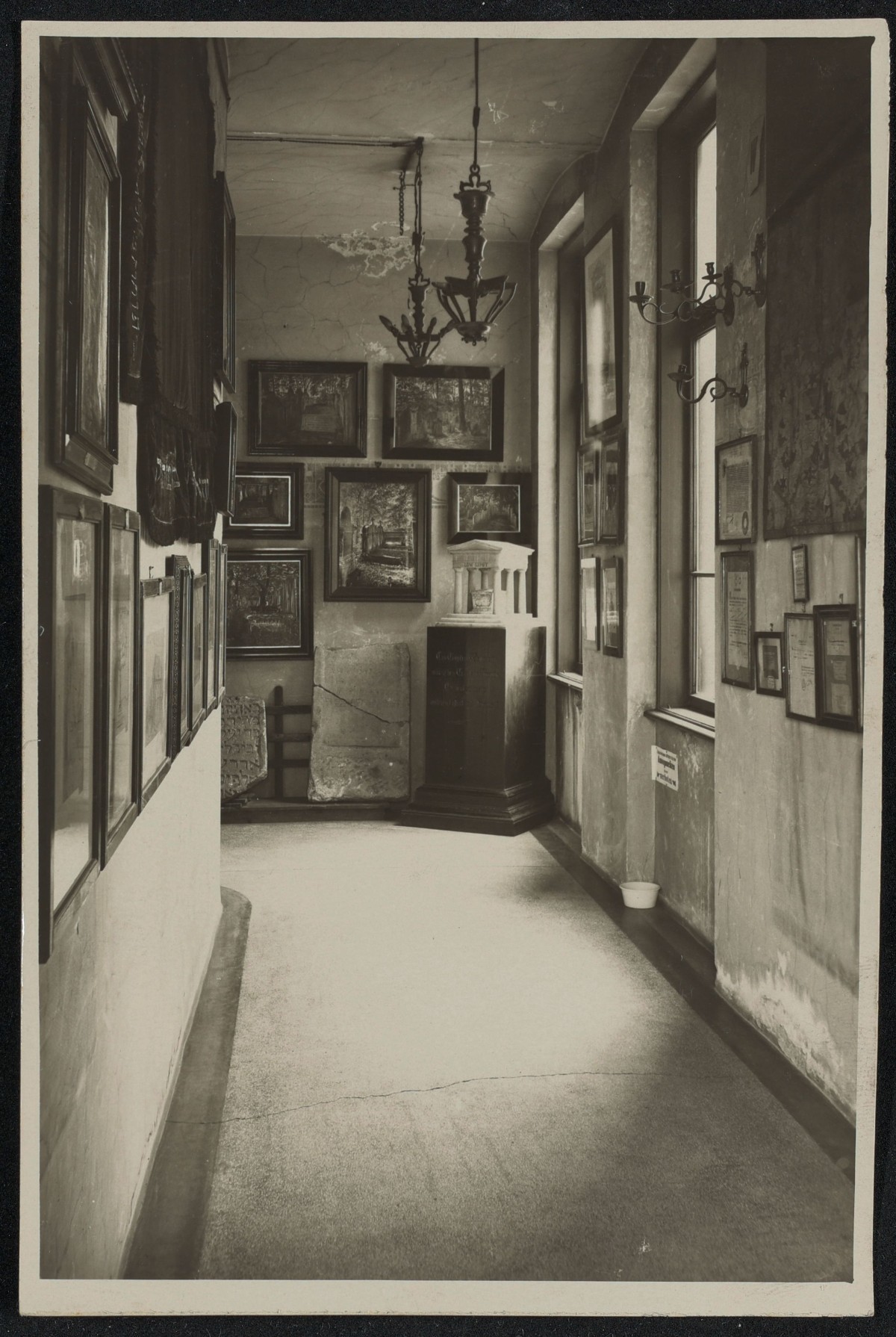
© JMW
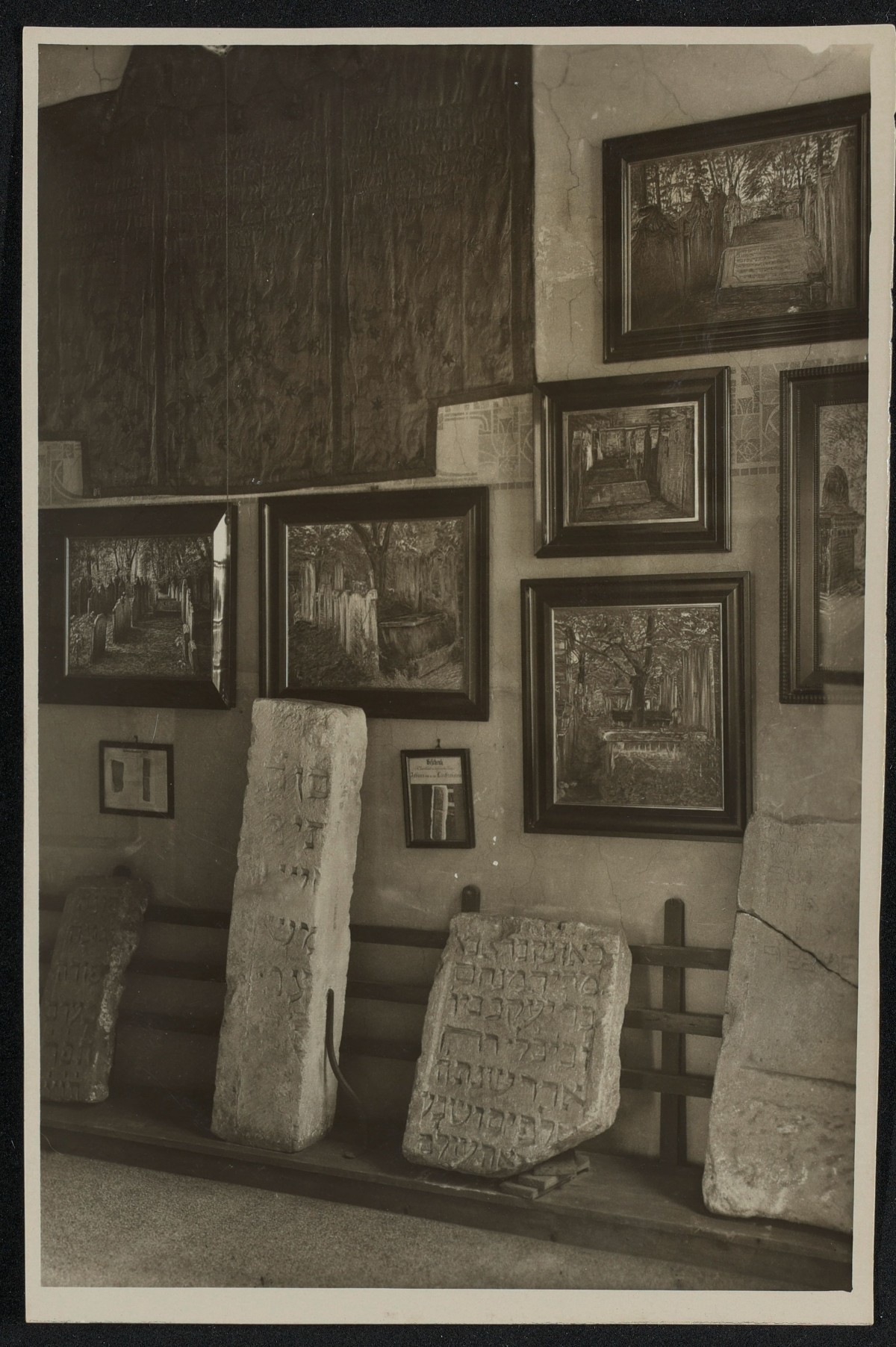
© JMW
Interior views of the exhibition rooms at the First Jewish Museum in Malzgasse 16, c. 1928. Inv. Nos. 2623, 2624, 2625, 2626, 2627, 2628
Despite financial difficulties and the deaths of key founding members such as Max Fleischer (1905), Wilhelm Stiassny (1910), and Adam Politzer (1920), the museum remained active. On May 14, 1928, the Neue Wiener Journal described the Jewish Museum Vienna as a “hidden gem”:
It is certainly no surprise that many Viennese are not well informed about the special places and treasures of their city. Foreigners often know much more, seem to get everywhere more easily, and sometimes even make discoveries. Thus, not too many locals may know that Vienna has its own Jewish Museum, which contains material that is valuable and unique in many respects.6
Despite financial difficulties and the deaths of key founding members such as Max Fleischer (1905), Wilhelm Stiassny (1910), and Adam Politzer (1920), the museum remained active. On May 14, 1928, the Neue Wiener Journal described the Jewish Museum Vienna as a “hidden gem”:
It is certainly no surprise that many Viennese are not well informed about the special places and treasures of their city. Foreigners often know much more, seem to get everywhere more easily, and sometimes even make discoveries. Thus, not too many locals may know that Vienna has its own Jewish Museum, which contains material that is valuable and unique in many respects.6
1938 marked a drastic turning point: After the Anschluss, the Nazi regime closed the museum and confiscated its collection of 6,474 objects. These were distributed among various Viennese institutions, including the Natural History Museum, the Museum of Ethnology (today the Weltmuseum), and the Historical Museum of the City of Vienna (today the Wien Museum). After the war, the surviving objects were restituted to the Jewish Community of Vienna. With the reestablishment of the Jewish Museum Vienna in 1988, they formed the foundation of the current collection.
Links:
Footnotes:
[1] „Ein jüdisches Museum“, in: Die Neuzeit. Wochenschrift für politische, religiöse und Cultur-Interessen, 249-250.[2] „Der amerikanische Botschafter im jüdischen Museum“, in: Die Neuzeit. Wochenschrift für politische, religiöse und Cultur-Interessen, 418.
[3] Christa Prokisch, „Chronik einer Ansammlung. Jüdische Museen in Wien (1893-1938), in: Felicitas Heimann-Jelinek/Wiebke Krohn (Hg.): Das Erste (Wien, 2005), 6-7.
[4] R., „Besuch im Wiener Jüdischen Museum“, in: Neues Wiener Journal, 14.5.1928, 4.
